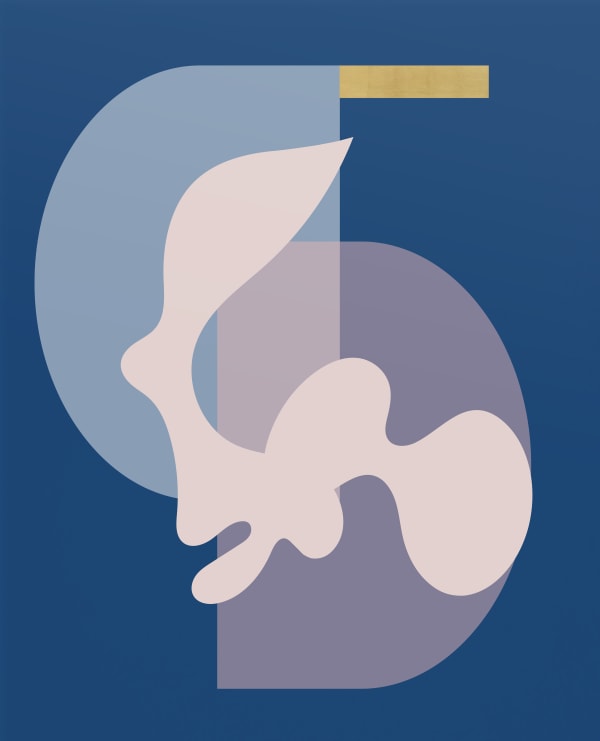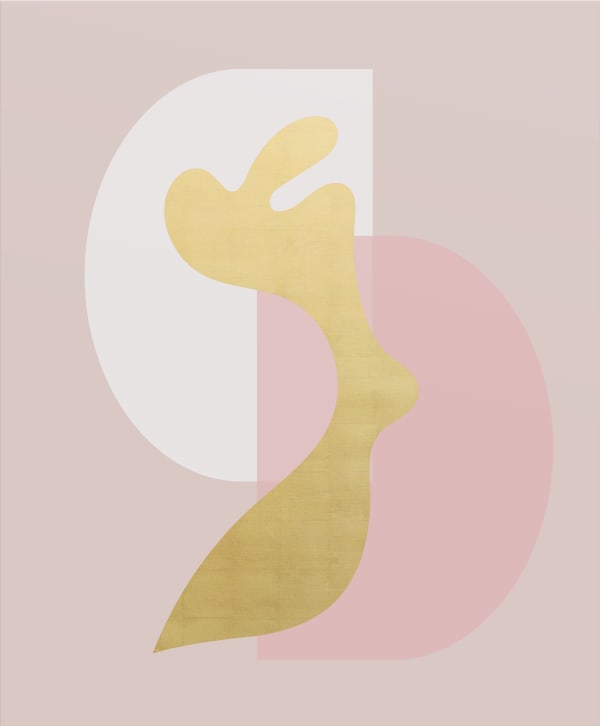-
Sinta Tantra
On Being Blue -

-
-
Solo exhibitions include On Being Blue, Kristin Hjellegjerde Gallery, Nevlunghavn (2022); Constellations of Being, ISA, Jakarta (2022); Birds of Paradise, Kristin Hjellegjerde Gallery, Berlin (2021); Modern Times, Kristin Hjellegjerde Gallery, London (2020); Your Private Sky, Kristin Hjellegjerde Gallery, London (2018); A house in Bali, Isa Art Advisory, Jakarta (2017); A Romance of Many Dimensions, Pearl Lam Gallery, SOHO Hong Kong (2016) and Fantastic Chromatic, Kristin Hjellegjerde Gallery (2015).
Group exhibitions include (Upcoming) Art Singapore, Singapore (2023); Reverberation, ISA, Jakarta (2022); Facing the Sun, Kristin Hjellegjerde Gallery, Schloss Görne, Germany (2021); Buah Tangan, ISA, Jakarta (2020); On the Nature of Botanical Gardens, Framer Framed, Amsterdam (2020); Reinventing Eve, Isa, Jakarta (2019); Y: Collect 3.0, Ruci Art Space, Jakarta; Woven & Illuminated(2019); Strangers in Town und Art Dubai, mit Kristin Hjellegjerde Gallery, Dubai (2019); Reflections, Puerta Roja Gallery, Hong Kong (2018); Karachi Biennial, Pakistan (2019); Always Bright, Ambiente Indonesia via Isa Art Advisory, Jakarta (2018), Empirical Atlas, Pearl Lam Gallery, Singapore (2017), High Noon, Accademia Belle Arti di Rome, Rome (2017), Quotidian, Pearl Lam Gallery, Shanghai (2017); Lost and Found: Place, Space; Identity, the World Trade Centre, Jakarta (2016); Nick Hornby & Sinta Tantra: Collaborative Works, Choi and Lager Gallery, Cologne (2015); Bend Sinister, i-CAN, Yogyakarta (2014); Gatekeeper, William Holman Gallery, New York (2014); Indonesian Contemporary Art and Design, Grand Kemang Hotel, Jakarta (2013); The Fine Line, Identity Gallery, Hong Kong (2013); and Confined, NEST Gallery, The Hague (2012).
-
Highlights and collections. Sinta Tantra’s artworks can be found in international private and public collections, including Government Art Collection UK; Karachi Biennale; Benetton Collection; Folkestone Triennial, Canary Wharf. Tantra is a recipient of many awards including the Bridget Riley Drawing Fellow at The British School at Rome (2017); British Council’s International Development Award (2014); and Deutsche Bank Award (2006). In 2018, she received an artist residency at the Stoneleaf Retreat, New York. Tantra’s work has been featured in both UK and international press including the Evening Standard, Tate Shots, FAD Magazine, The Jakarta Post and BBC Radio Indonesia. Public commissions include: Temple of Flora, Ocean Flower Island, Hainan (2021); Illumination, 22 Bishopsgate, London commissioned by Contemporary Art Society (2021); The Grand Tour, Dulwich Picture Gallery, London (2020); Poins Square, Jakarta (2020); Horizon to Horizon, Sharjah Islamic Arts Festival, Sharjah (2019); Bright Dawn, Karachi Biennale, Karachi (2019); Compose Motions und Tasted Flight, Honer Hills, Seoul (2019); Sunset in Tanah Lot, Facebook, London (2018); Collaboration with Nick Hornby, Broadgate sites, London (2018); In the Mood for Love, Lee Tung Avenue, Hong Kong (2018); 147, Folkestone Triennial (2017); A Means of Liberation, Newnham College, Cambridge University (2016); Songdo, Songdo, South Korea (2015); The Eccentricity of Zero, Royal British Society of Sculptors, Holland Park (2013); Together Yet Forever Apart, Liverpool Biennial (2012) and A Good Time and a Half!, Southbank Centre (2007). Tantra’s most notable public work includes a 300-metre long painted bridge commissioned for the 2012 Olympics, Canary Wharf, London.
-
-

-
-
The exhibition takes its title from a book by the American writer William H. Gass, first published in 1976, in which he reflects on the various shades – and symbolisms – of blue. It is both a catalogue of sorts, filled with lists, and a philosophical reflection of the variousness of the colour, its infinite depths. Tantra’s exhibition takes a similar approach: some paintings directly explore the subtleties of blue through paint, while others – rendered in nude tones – make reference to the history of blue within the context of the building and its geographical location. In the early twentieth century, Nevlunghavn was a thriving fishing port and the shrimp factory – where the gallery resides – a hub of activity with its produce being shipped across the globe. As tradition goes, the men would go to sea to do the fishing, while the women packed the shrimp inside the building. The machines that remain in the space today are a reminder of this storied history. ‘I’m interested in the contrast between the traditionally masculine arena of the sea and the dangers that it represented alongside the interior spaces of the building where women got together to work and share stories,’ says Tantra. Seen alongside each other, the works set up a visual dialogue that speaks of these different lines of production, of lives lived by and with the sea.
In the first gallery space, for example, we encounter two large-scale works hanging side by side: A Great White God and Unwaning Woe. The titles of both paintings are taken from Herman Melville’s novel Moby Dick, in which the characters set out to hunt and kill a monstrous whale. In A Great White God, a nude-coloured form appears undulating against two translucent, overlapping mirrored shapes and a deep blue backdrop bringing to mind the shape of a creature viewed beneath the surface of water. While in Unwaning Woe, beige organic forms recall the curved outline of shrimp or coral. We might read the works, quite simply, as a kind of cause and effect – the dangers of the sea and the ‘unwaning woe’ suffered by those at home – but as throughout the exhibition, the contrast that Tantra sets up is rarely so clear cut. There is, for example, a shared softness in paintings that creates a powerful sense of synergy, which is further emphasised by the luminous presence of gold leaf, as a small rectangular strip in the former, and a larger curved mark in the latter. Gold leaf occurs elsewhere in the exhibition, adding a sensuousness to the works while also referring to the history of collecting and souvenir. ‘The concept of travelling and bringing back objects as souvenirs is traditionally quite a Western practice,’ says Tantra. ‘It was a way of showing status and knowledge. Gold carries that history and physicality.’ This is further explored through the found objects, such as whale ear bones and blue crystals, that are dotted around the gallery space. They are organic objects that bear a strong connection to place and memory while also bearing a relationship to the more sinister side of material accumulation that sometimes comes at the expense of our natural environments.
-
Meanwhile, the sound piece plays on a ten-minute loop, creating a sudden, powerful sense of aliveness that transports viewers into a watery landscape and back to a time when the building was filled with the sound of machinery and voices. It is a reminder both of the factory’s former life and of our close relationship with and reliance on nature that transcends time and geographical boundaries. Tantra’s mural outside the gallery also makes reference to this relationship. Spanning the full width and height of one end of the building, the various blues of the painting appear, at times, to blend in with the sky, while a giant organic white form, once again reminiscent of an organic form, appears to grow up from the bottom seemingly dissolving the division between land and water. As with all of Tantra’s public artworks, the painting changes throughout the day, offering a slightly different perspective or mood. The floating gold leaf orb in the top right-hand corner, for example, reflects a warm, golden light during the day and is transformed into a more ghostly, glimmering presence at night. In this way, we are invited to consider how the passage of time and our cultural and physical positioning affects our perception of not just space, but also history.
-
-
Enquire
-
Sinta Tantra: On Being Blue
Past viewing_room















